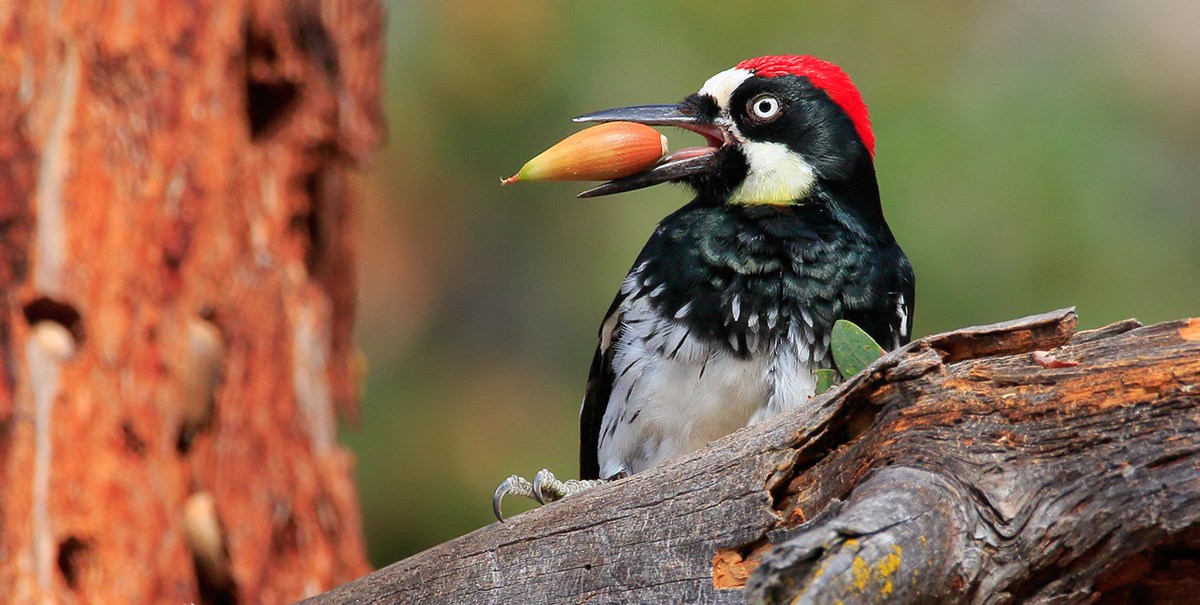Understanding Woodpeckers in Florida: Habits, Variety, and Environments
Understanding Woodpeckers in Florida: Habits, Variety, and Environments
Blog Article
Woodpeckers: A Comprehensive Overview to Recognizing These Distinct Birds
Woodpeckers, with their distinct behaviors and physical characteristics, have long captivated the curiosity of ornithologists and nature lovers alike. From their balanced drumming resembling through the timbers to their amazing adjustments for scaling tree trunks effortlessly, these birds present an interesting research in avian biology. What truly sets woodpeckers apart is not simply their striking look however likewise their essential function in maintaining the fragile equilibrium of environments. As we discover the intricate anatomy, diverse types, and environmental significance of woodpeckers, a deeper admiration for these special birds and the secrets they hold unfolds.

Woodpeckers' Drumming Habits
Woodpeckers exhibit a rhythmic and exact drumming habits that serves numerous crucial functions in their every day lives. This behavior is mainly associated with communication, territory protection, and foraging. The unique drumming noise is created by the rapid pecking of their beaks versus difficult surface areas such as tree trunks, branches, and even steel items.
Interaction is a critical aspect of woodpecker behavior, and drumming plays a substantial duty in this procedure. Woodpeckers utilize drumming to establish their presence, bring in companions, and preserve contact with their partners and offspring. The frequency, strength, and duration of drumming sequences convey details messages to other woodpeckers in the area.
In enhancement to interaction, woodpeckers use drumming behavior for region protection. Woodpeckers in Florida. The loud and repeated drumming works as a cautioning to possible burglars, signifying that the area is currently claimed. By developing their area with drumming, woodpeckers minimize the probability of disputes over valuable resources such as food and nesting websites
Additionally, woodpeckers likewise use drumming as a foraging strategy. The balanced pecking helps them find pests hiding under the bark of trees by producing vibrations that interfere with the prey's cover-up. This actions showcases the flexibility and ingenuity of woodpeckers in utilizing their drumming abilities for multiple crucial purposes.
Special Adaptations for Tree Climbing
Having grasped the art of drumming to connect, defend area, and forage, woodpeckers have actually evolved distinct adjustments that promote their remarkable climbing capabilities in their arboreal environments. One vital adaptation is their specific feet. Woodpeckers have zygodactyl feet, with 2 toes aiming onward and two toes pointing backwards. This plan supplies a solid grasp on the vertical surfaces of trees, allowing them to cling effortlessly while foraging for bugs or drumming. Furthermore, woodpeckers have tight tail plumes that work as a prop to sustain their site bodies as they climb. These tail plumes provide stability and balance, enabling woodpeckers to maneuver up tree trunks with precision and agility.
Additionally, woodpeckers have powerful neck muscles and an unique head framework that aid in their climbing abilities. Their solid neck muscle mass enable them to rapidly eat tree bark without experiencing whiplash, while their thick head and little brain act as shock absorbers, shielding them visit homepage from the effect of repeated drumming. These adaptations jointly allow woodpeckers to navigate the upright globe of trees with efficiency and poise.

Duty of Woodpeckers in Environments
By foraging for pests under the bark of trees, woodpeckers aid manage parasite populaces, preventing outbreaks that can damage the overall wellness of the woodland. In addition, woodpeckers produce tooth cavities in trees that serve as important nesting sites for a variety of various other bird varieties, advertising biodiversity within the environment.
Furthermore, the drumming and vocalizations of woodpeckers play a vital duty in interaction and area establishment. These audios not just serve to attract friends yet likewise help specify limits between various woodpecker areas, decreasing conflicts and advertising a harmonious coexistence within the woodland neighborhood. Overall, the visibility of woodpeckers in forest ecosystems highlights their relevance as keystone types, influencing the characteristics and working of these environments in diverse ways.
Composition: Specialized Beaks and Feet
In like it the intricate web of woodland ecosystems, the specialized beaks and feet of woodpeckers are necessary adaptations that enable them to meet their essential environmental duties. Woodpeckers possess special physiological features that are particularly made to aid them in their foraging and nesting behaviors.
One of the most distinguishing characteristic of woodpeckers is their strong, chisel-shaped beaks. These beaks are completely adjusted for exploration into wood to discover bugs, larvae, and sap surprise beneath the bark of trees. The strong muscle mass and tough framework of their beaks allow woodpeckers to peck at a rate of as much as 20 times per second without triggering damages to their heads.
In addition, woodpeckers have actually specialized feet that help in their acrobatic climbing abilities. Their feet have two toes directing ahead and two toes directing in reverse, giving a solid grasp on upright surface areas (Woodpeckers in Florida). This unique foot arrangement, along with stiff tail feathers that act as a supportive prop, allows woodpeckers to hold on to tree trunks and branches effortlessly while they look for food or excavate nesting cavities
Woodpecker Species Variety
Woodpeckers are a varied group of birds found across various environments worldwide, with over 200 recognized species displaying adaptations to different settings. Woodpeckers have advanced to live in a variety of environments, from woodlands and forests to meadows and deserts, each providing unique obstacles that have affected the evolution of distinctive woodpecker types.
These adaptations allow woodpeckers to forage effectively in their corresponding environments, decreasing competition amongst varieties and advertising particular niche differentiation. Additionally, geographic seclusion and historic variables have actually played a role in shaping the distribution and diversity of woodpecker species, leading to the broad variety of specialized adjustments seen in these remarkable birds.

Conclusion
In conclusion, woodpeckers are interesting birds that show distinct drumming actions, specialized adaptations for tree climbing, and play vital roles in environments. With a diverse variety of woodpecker varieties found worldwide, these birds are vital for keeping the health and balance of woodlands and timberlands.
Report this page